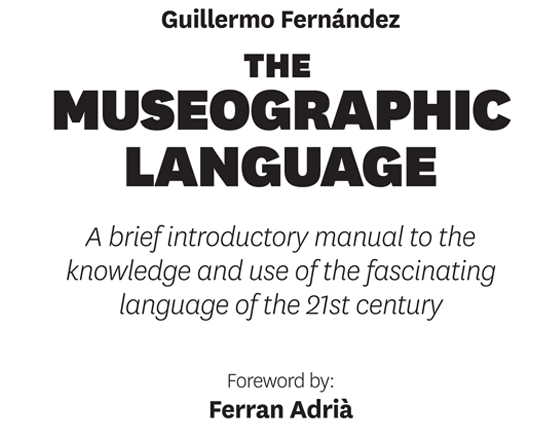The surprising disparity in the structure of the credit labels that are usually located at the exit of the exhibitions, could be interpreted as another symptom of the difficulties of handling shared work and management criteria in the sector. This dissimilarity is not found so frequently in other areas of communication, since the credits of the products of other languages —such as cinema, theater or music— are usually perfectly convergent for each language, as might be expected and despite the often intricate diversity inherent to each of them.
Based on the table above, an admittedly non-exhaustive structure (distributed in columns) is proposed here for the credits label for any type of exhibition, not just science. This proposal aspires to be a starting point that opens a path towards obtaining a certain common coherence in the credit labels of all types of exhibitions —also as an indirect way of promoting concomitances in other aspects of the museum profession as well—, although always with the necessary flexibility to adapt to each case with different degrees of detail and complexity.
TITLE OF THE EXHIBITION
Opening date and place.
Promoting organization.
– Relevant members of the strategic staff (boards of trustees, boards of directors, etc.).
– Relevant embers of the executive staff (CEO, other managers, etc.).
Director of the exhibition (person).
– Coordination assistants in different areas.
– Administrative support.
Curatorship (person or organization).
– Content advisors (depending on each topic).
– Researchers.
Strategic panel (team).
– Education managers.
– Evaluators of the communicative capacity of the exhibition.
Museographic language: conceptualization of the museographic solutions/script (team).
– Team members who developed the key ideas and museographic solutions based on the resources of the museographic language.
– Team members in charge of the use of auxiliary resources to the museographic language in support of the key ideas and museographic solutions.
– Team members responsible for the museum R&D&I.
Creation of the museographic elements (several contributors).
– Team members in charge of the design and production around the native resources of the museographic language.
• Artifacts.
– Location.
– Purchase/donation.
– Registration and conservation.
– Handling.
– …
• Models.
– Design.
– Production.
• Demonstrations.
– Design.
– Production.
• Analogies.
– Design.
– Production.
– Team members in charge of the design and production around auxiliary resources to museographic language.
• Graphic language
– Graphic design and production.
→ Layout.
→ Illustrations.
→ Photography.
→ Management of the use of images and photos/credits.
→ …
– Contents.
→ Text writing.
→ Proofreading.
→ Translation.
→ Corrections.
→ Facsimile.
→ …
• Audiovisual language.
– Audiovisual design and production.
→ Production of audiovisuals.
→ Production of infographics/multimedia or other digital audiovisual media.
→ Assembling of audiovisual installations.
…
– Contents.
→ Storyboards.
→ Management of the use of videos/credits.
→ Dubbing/subtitling.
→ …
• Oral language.
– Design and production.
→ Explainers.
→ Development of guided/commented/dynamic/dramatized visits.
→ …
– Contents.
→ Provision of the service of the educational program.
– Participants, artists and providers (related to any resource).
Creation of the exhibition space (several contributors).
– Interior design.
• Basic project
• Executive project.
– Production.
• Furniture and structures.
• Assembling.
• Transport.
• Lighting.
• Electricity and installations.
• Maintenance.
• Equipment rentals.
• Insurances.
• …
Special collaborations/collaborating organizations (several contributors).
Acknowledgments (several contributors).
Next: Resources and references.
Previous: The exhibitions management.
